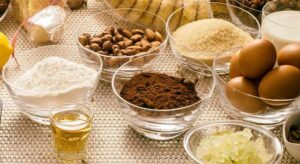A leap back in time, to discover and rediscover the flavors of a golden age, that of the Italian Renaissance. Among sumptuous meals and original – to say the least – recipes, we follow the steps of those who now tries to reproduce on our plates all the charm of a world as far as unforgettable!
The Italian Renaissance was definitely one of the most beautiful and fascinating period that history records.
In those faraway years flourished wonderful cities, led by powerful dynasties, the Medici in Firenze, the Estensi in Ferrara , the Gonzaga in Mantova, the Malatesta in Rimini , the Montefeltro in Urbino and many more.
Great artists offered their talent to these important families creating unique works of art, the splendor of which has come down to the present day.
However, the magnitude of these families did not manifest itself only through their beautiful palaces, their rich clothes and jewels.
Guests came to the palace or the villa had to be enchanted not only by the richness of the furniture, but also from that of the table, oh yes, because power also passed through the food and the ability to process precious dishes, fruit of the imagination of chefs and of master of ceremonies .
The chronicles and cooking treatise of the time give us back very detailed stories about how picturesque these banquets were, especially how the meals were imaginative and amazing.
Imagine you were invited to a table where quietly paraded: ” …roast pigeons, livers, thrushes, partridges …”, and even sugar castle “with very artificially composed battlements and towers” full of live birds ready to take flight in the middle of the room, and then deer, ostriches, heads of veal, boiled capons, breasts and loin of veal, goats, sausages and peacocks “dressed with their quills in the manner that they did the wheel”, and finally sugar cakes with almonds, biscuits, jellies, marzipan “and other similar kindnesses”.
The recipes of these original and creative meals arrives to us directly from the “Cracco” and “Barbieri” of those times, from the Renaissance’s chefs. And so, thanks to Bartolomeo Scappi and his meats carver (the one who cuts and divides meats) Cristoforo di Messisbugo, we cannot only know what and how did they eat at the large Italian courts, but we can also try to replicate these daring dishes.
And that’s exactly what Daniela Storoni does, founder of “Rinascimento a tavola” in Urbino, a real workshop where you can discover the Renaissance cuisine and its methods.
In this way was born the Renaissance shortbreads selection which reproduce the taste of that glorious period; just mention the famous Raffaello Tortelletti Cookies, a delicious pastry case enclosing sweet marzipan prepared with organic almonds of the Slow food presidium of Toritto, or also the Morselletti Biscottati Cookies, often appearing at banquets next to the bread, and are prepared with Organic rose water and star anise and the rich Mostazzoli del Duca, as well as the Brazatelle Savoury Cookies, whose name comes from their shape similar to that of a bracelet.
Here then that the style and sophistication of the great courts of the Renaissance can be rediscovered, through little morsels whose flavor is a hymn to the encounter between the ancient and the modern, a little luxury to be allowed to rediscover, through the palate, the glory of ancient – but memorable – times!




